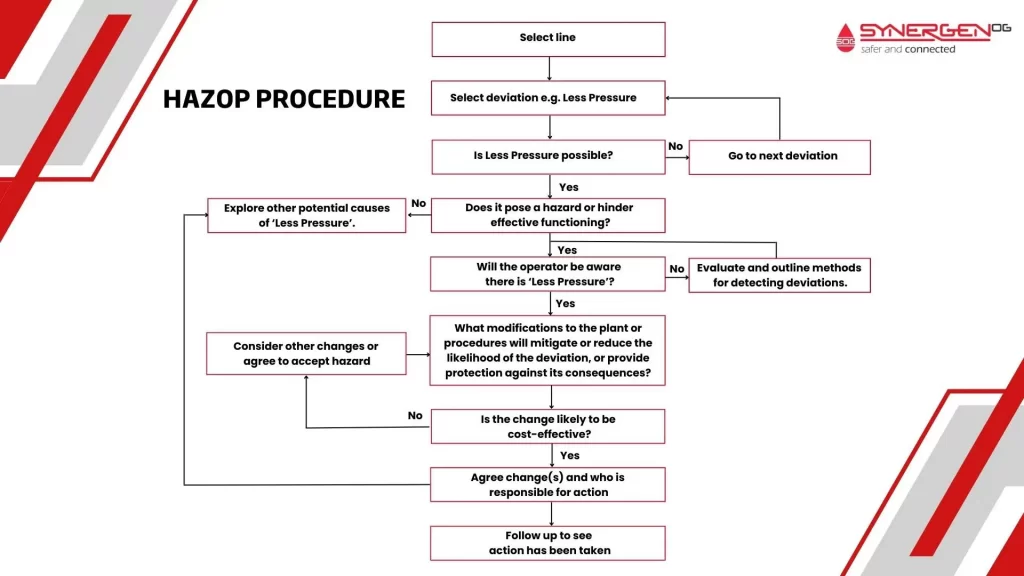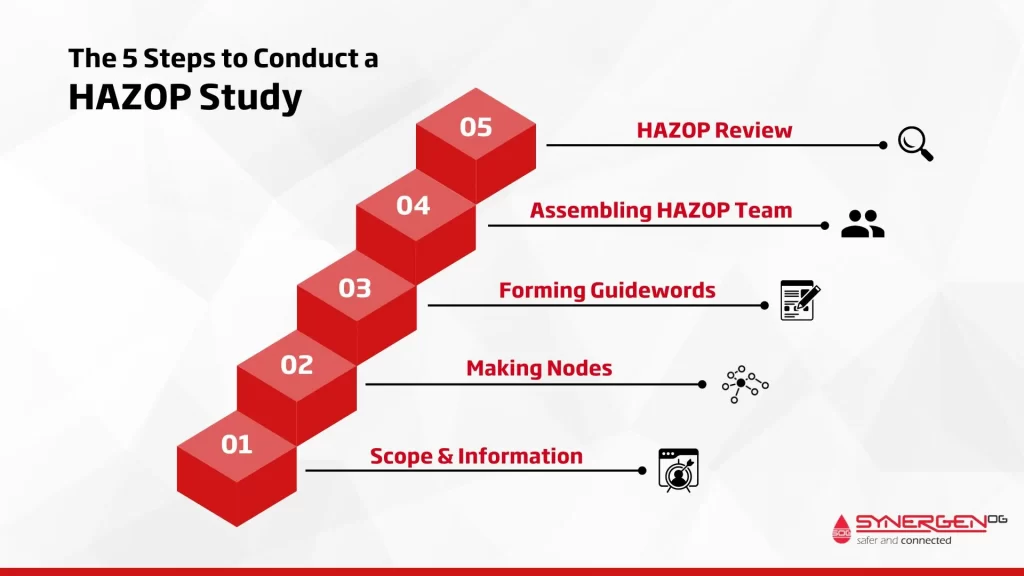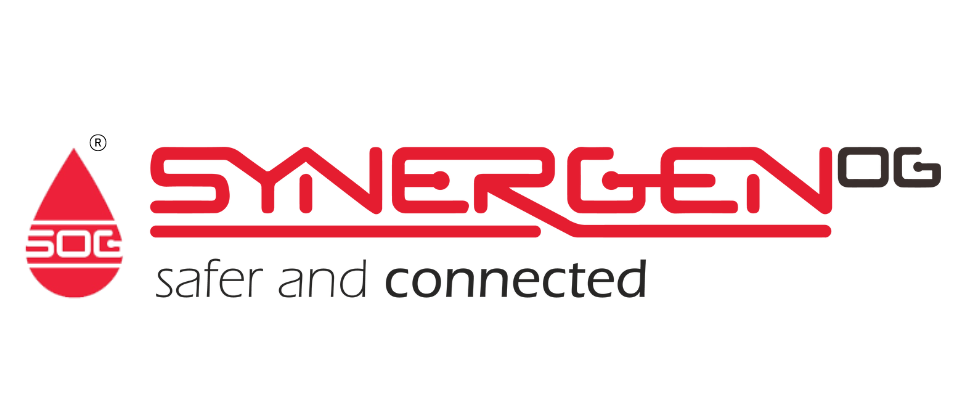| Summary: This article explores the difference between HAZOP and PHA and their role in promoting safety. PHA analyses processes to identify hazards and assess risks, while HAZOP is a specific method within PHA for identifying deviations from design. HAZOP uses guide words to systematically analyse process systems and propose preventive measures. It is considered effective but has limitations. Proper use of PHA methods, including HAZOP, enhances process safety. |
Although HAZOP falls under PHA, some may find it difficult to distinguish these two terms. In this article, let’s look into the world of HAZOP and PHA, exploring their differences, benefits, and how they contribute to a robust safety culture.
What is PHA
Process hazard analysis (PHA) examines a process to identify potential hazards and assess the associated risks. PHA evaluates the process from different angles, considering various scenarios and possible deviations. It aims to identify and prioritise hazards, determine risk levels, and recommend appropriate control measures to effectively manage and mitigate those risks.
Methods used in PHA
As per OSHO, there are different ways to conduct process hazard analysis, such as,
- Layer of Protection Analysis (LOPA)
- Hazard and Operability Study (HAZOP)
- Failure Modes and Effects Analysis (FMEA)
- What-If Analysis
- Fault Tree Analysis (FTA)
- Bow Tie Analysis
- Hazard Identification (HAZID)
What is HAZOP?

HAZOP (hazard and operability study) is one of the methods for performing PHA; it is a systematic and structured technique used to identify potential hazards and deviations from the intended design of a process.
HAZOP is working on the theory that deviations from design or operating intentions cause risk events. In order to identify such deviations, a set of “guide words” is used as a systematic list of deviation perspectives.
It focuses on analysing process systems, identifying potential causes of deviations, and proposing preventive or mitigative measures. HAZOP studies are typically conducted during a process’s design or modification stage to ensure safety considerations are integrated from the outset.
How Does HAZOP Work?
During a HAZOP study, a multidisciplinary team comprising engineers, operators, and safety professionals closely examines the process under consideration. The team systematically applies a set of guidewords to each process parameter, equipment item, and control system element.
By doing so, they explore potential deviations from the design intent and assess the associated risks. The HAZOP study generates a comprehensive report that outlines the identified hazards and suggests appropriate control measures.
The 5 Steps to Conduct a HAZOP Study
There are five major steps involved in conducting an effective HAZOP study.

1. Scope & Information
Gathering information and defining the scope of the review, which involves collecting data from the following sources.
- PFD
- P&ID
- Design Drawings
- Concept Papers
- Industry Guides/Standards
- Authoritative Standards
- Operating Manuals
2. Making Nodes
The entire plant has been divided into nodes; each node represents a specific point where potential hazards or operability issues can arise. Nodes can represent different elements depending on the specific diagram and its purpose, but typically they depict equipment, instruments, vessels, pipes, or other process-related entities.
3. Forming Guidewords
Those are predefined words or phrases formed by deviations and parameters in the process. Based on each guideword, the team can brainstorm the related hazards.
The most commonly used guidewords include:
- No or None: What if there is no flow, no pressure, no power, no material, etc.?
- More: What if there is more flow, more pressure, more temperature, more material, etc.?
- Less: What if there is less flow, less pressure, less temperature, less material, etc.?
- Reverse: What if there is a reverse flow, reverse direction, reverse action, etc.?
- Part of What if only a part of the process is functioning, or a partial quantity is present?
4. Assembling HAZOP Team
It is recommended that the team consists of people from engineering, management, and operations, along with external experts if needed. It should have an experienced team with skills, knowledge, experience working on independent projects, and a good understanding of plant and operations.
5. HAZOP Review
Finally with all these elements in place, looking into nodes, forming the guidewords, the team have to do Hazop review with strategic brainstorming sessions.
Step-by-Step HAZOP Review / Analysis Process
- Assigning a unique tracking number to each entry
- Use the deviation guideword
- Describe the guideword (material, process etc.)
- Describe the deviation
- Describe what are the possible causes for the deviation
- Describe what the consequences of the deviation are
- List the preventive or reactive controls to reduce the severity or likelihood of the deviation
- Give comments on key relevant rationale, assumptions and data
- Identify the control actions required
- Record who is responsible for actions
Why HAZOP?
HAZOP is considered one of the most effective PHA methods or risk assessment tools compared to other traditional PHA methods. It addresses both safety and operability, assuring that all the hazard scenarios are identified.
HAZOP is identified as the best-suited method for assessing hazards in facilities, equipment, and processes.
Limitations of HAZOP
Due to its focus on individual nodes, HAZOP may miss some scenarios involving interaction between nodes. Also, HAZOP doesn’t have risk ranking or prioritisation capability.
The success rate of a HAZOP review relies on the ability of subject matter experts (SMEs) to predict deviations based on past experiences and general subject matter expertise.
How does SynergenOG help you with a HAZOP study?
Intending to improve safety and ensure compliance with relevant laws, codes, and standards, SynergenOG offers comprehensive technical advisory and consulting services on HAZOP.
HAZOP studies are facilitated by our experts, who ensure that brainstorming sessions are structured well and performed systematically, fostering creative solutions, and supporting analysis and documentation.
Conclusion
In conclusion, PHA provides a broad approach to identifying and evaluating hazards, considering various techniques such as What-If analysis, Checklist analysis, and Failure Mode and Effects Analysis (FMEA). On the other hand, as a method under PHA, HAZOP focuses specifically on deviations from normal operating conditions and their potential consequences, using guidewords to explore scenarios systematically.
By utilising these methods appropriately, industries can proactively address potential hazards and make informed decisions to enhance overall process safety.
FAQ - HAZOP Vs PHA
- What is HAZOP in process safety?
HAZOP stands for Hazard and Operability Study, which is a systematic and structured method of identifying and evaluating hazards in industrial processes.
- Why is HAZOP required?
HAZOP can help to identify and solve the common operability issues such as maintenance, startup, isolations, etc. as it provides a rigorous and systematic check of the design in terms of safety, operability, and conformity to the standards.
- How is HAZOP carried out?
HAZOP is a brainstorming session – carried out in workshop format – with objectives to identify any design or operability issue within the facility that might lead to safety or operation problems. HAZOP session should consist of a team with a multidisciplinary background, guided
by a Facilitator. To help the brainstorming done systematically list of guidewords is used during the workshop and a Scribe will minutes the points result from the brainstorming. - What is the main purpose of the HAZOP study?
HAZOP study is done to identify design or operational faults etc. leading to safety or operability problems.
- How do you prepare for HAZOP?
Typically, the scope of the HAZOP is discussed in the document known as the Terms of Reference. This document will be passed to the attendees, along with marked-up P&IDs which indicate how the process is split up into nodes.
- When should HAZOP be done?
HAZOP can be done at any stage of a project as long as sufficient information is available such as piping and instrumentation diagram (P&ID). HAZOP can be revisited when there’s a design change impacting the P&IDs.
- What are the types of HAZOP?
(a) HAZOP for Continuous Operations
(b) HAZOP for Batch Operations
(c) Procedural HAZOP (i.e., Start-Up)
(d) Control HAZOP (CHAZOP)
(e) Electrical HAZOP (EHAZOP)/ Electrical Systems Safe Operability Review (SAFOP) - What is difference between PHA and HAZOP?
Process Hazards Analysis (PHA) is a study of process hazards that include methods like HAZOP, What-If and Checklist. Hazard and Operability Analysis (HAZOP) is a structured and systematic technique for identifying possible hazards in a work process.
- How do you identify nodes in Hazop?
Identified nodes through:
1) Design Intent
2) Significant change of process conditions
3) Equipment/System


[…] Read More On HAZOP vs PHA – https://synergenog.com/hazop-vs-pha/ […]